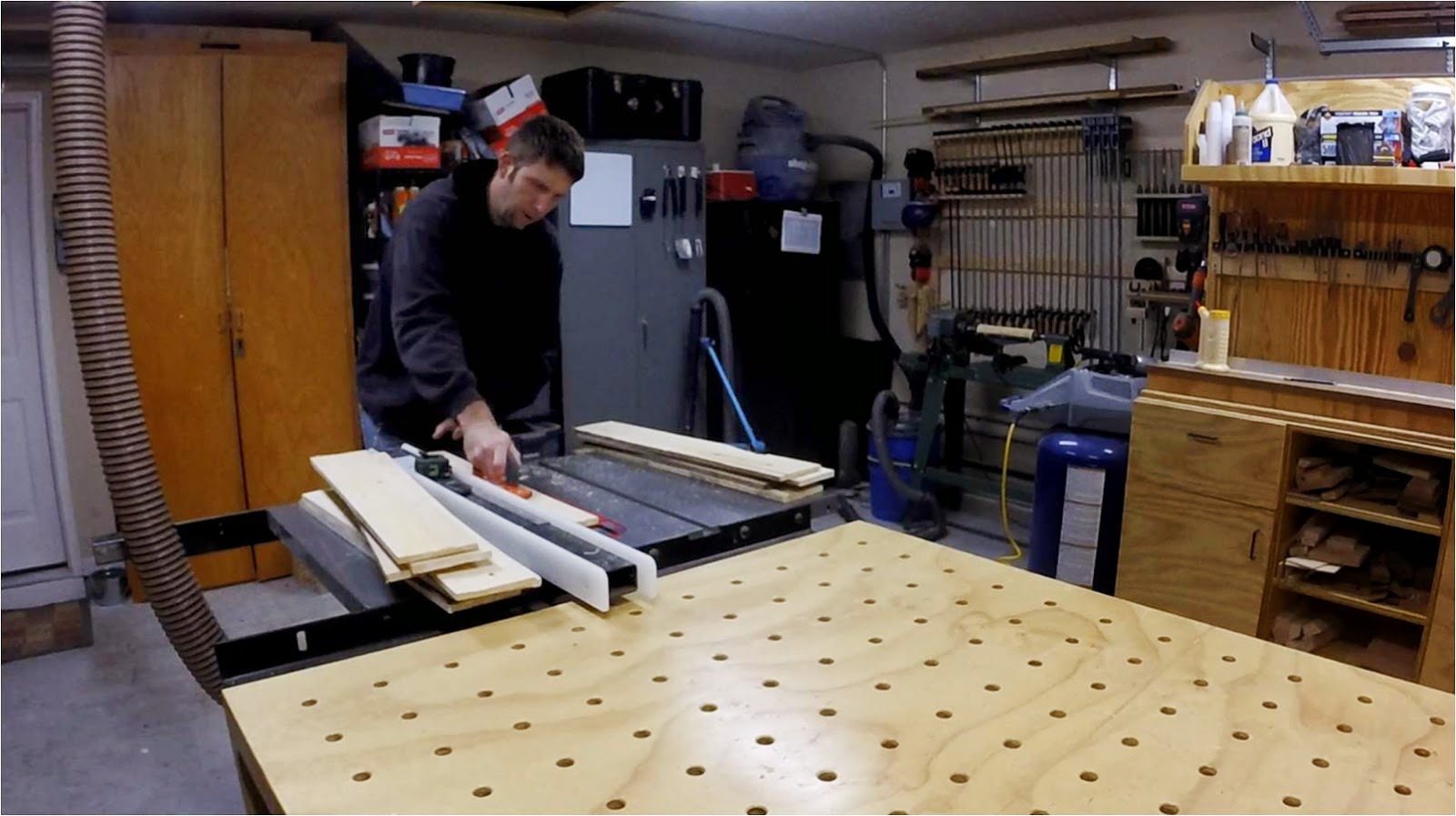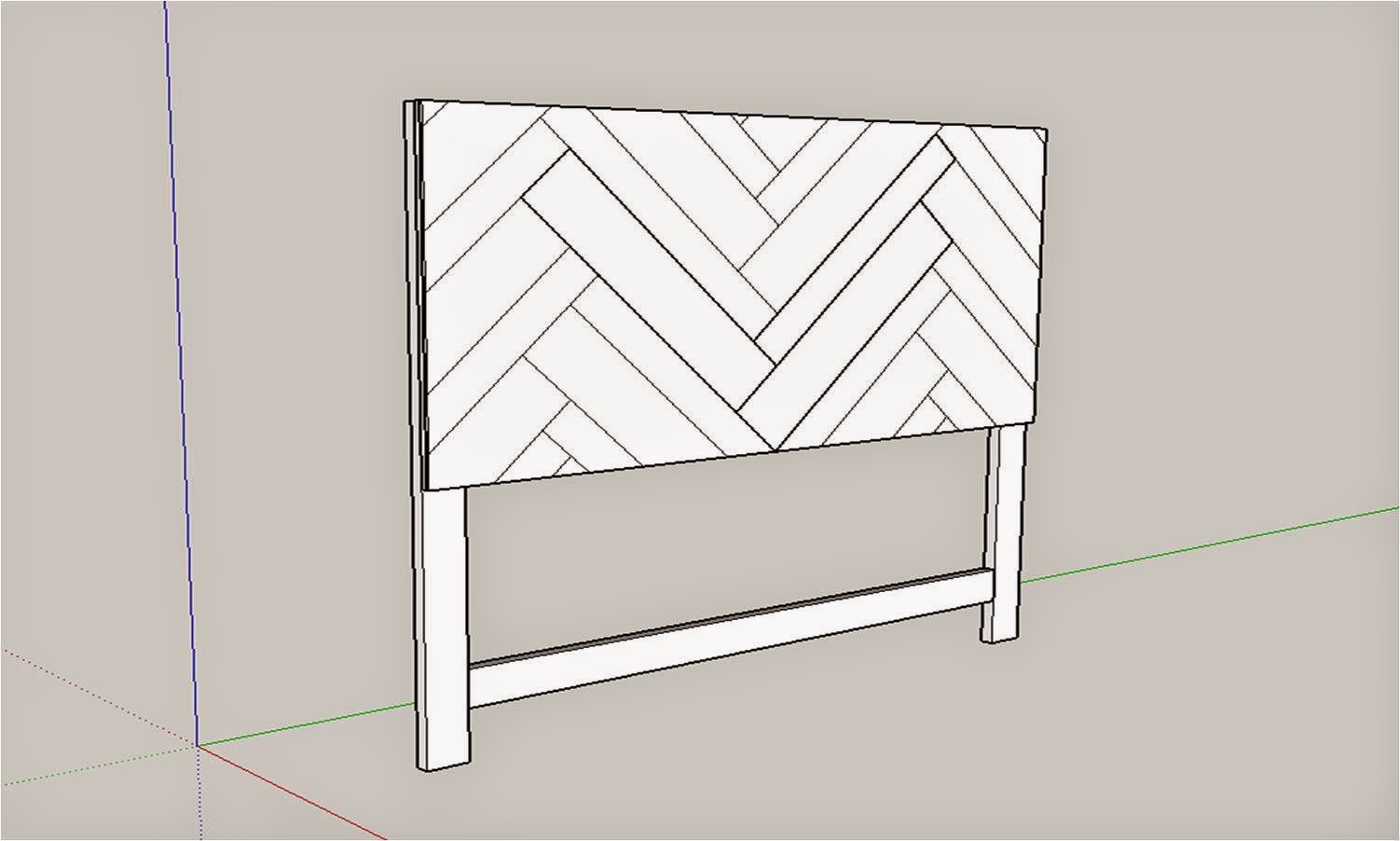The construction of this headboard is fairly simple. The wider boards that act as joists on a pallet would be used for both the main frame and also as an external decorative frame to finish it off. The frame for this bed would be 48 inches tall and 54 inches wide. Again, this is for a full sized mattress but you could easily adjust the dimensions to fit any size of mattress.
Before we get ahead of ourselves we have to break apart some pallets. I found some really nice pallets that had longer joists and slats that were in pretty good shape. Now keep in mind this was my first attempt at a pallet project so there was a little learning curve to take them apart without making a complete mess and destroying the wood.
My wife had suggested I cut off the ends of the slats to ease taking the pallets apart since most of the ends were already so tore up I wouldn't be able to use them. This worked out perfectly and really sped things up.When I got them all done I had a good amount of usable wood (and a little firewood).
Now it was time to start building. I used the long wide pieces to build the frame. The vertical styles were cut to 45 inches. Once both were cut I measured them laying together so I could subtract that measurement from 54 inches so I would have the exact width I needed without having to rip the boards down. I did this for a couple reasons but the main one was so that I didn't have to run a board that might still have nails in it through my table saw and risk damaging the blade.
The joinery I used was simple butt joints secured by pocket screws using Kregs K5 Pocket Hole Jig. These pocket holes won't be visible once the headboard is all together. I drill two pocket holes at either ends of the three horizontal rails.
Then it I just attached the frame pieces together making sure to check for square and I attached each joint. Having a flat work surface that you can clamp your work pieces really helps for projects like this.
The next step was to cut a 27 x 54 inch piece of half inch plywood to act as a backing so I could glue and nail the slats to. My table saw only has a 26 inch rip capacity so I had to rip it into a 25 inch and then a 2 inch piece. This isn't an issue since the slats will be hiding these pieces here shortly.
Once the plywood was cut to dimension I just glued and then nailed it to the frame. I used 18 gauge brad nails but you could using nails or screw since this will be covered by the slats.
Now its time to start ripping the slats. The chevron pattern I made will need five inch and 3 inch slats. I rip one clean side to the slat and then flip it and rip it to its final width to have both edges clean and parallel.
With all the slats cut to width I took them over to the miter saw to cut them to length. I tried to cut them all to 24 inches since this was going to be the longest part used to make the chevron. Because some of the ends were a little tore up and others had other messed up sections I had to cut them shorter. This isn't an issue since some of the pieces will end up getting cut down later.
To begin laying out the pattern I find and then mark the center of the headboard and also mark a 90 degree V. This will be the starting point to starting laying out the pieces. The slats get glued and then nailed to the plywood.
From there its just alternating rows between the 5 inch and 3 inch slats to make the pattern. The pattern possibilities are really just about endless. I altered the widths just to add to the visual design of the headboard.
I used my bandsaw to cut the slats down to rough size before I glued and nailed them. Once all the slats were down I used a belt sander and then a orbital sander to clean up the slats and even them off a little. I think if I was going to do this again I would have ran the slats through my thickness planer. Once it was sanded to my liking I took a flush trim bit in my router and then cleaned up the edges.
The final steps of the build is to measure two 45 inch boards for the sides to frame out the headboard. Then after gluing and nailing them to the sides I took a measurement of the overall width and then cut another board to be the top section of the frame. I used my finishing nail gun for these pieces since they were thicker than the slats.
To finish off the headboard I used two coats of a water based polyurethane and sanded it lightly between each coats. I chose the water based poly because I wanted a little protection but didn't want the yellowing that you get with normal polyurethane. I would have preferred to spray on the finish but because of the weather I chose to go with a brush on application.
Here it is with both coats of poly. I really like how it maintained some of it's rustic look without looking to "rustic".
Once the poly was dry I carried it up to my daughters room. To attach the headboard to the metal frame I used 8 small bolts with washers and nuts.
My daughter really likes how her headboard came out. She has now also requested a matching nightstand. I guess that will be an upcoming project. Here is the video I made of the build. I hope you enjoy it and if you want a free copy of the SketchUp you can find it at www.merzkecustomwoodworking.com.
















